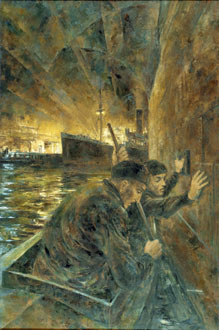

Preserved in Sydney harbour today, as part of the Australian National Maritime Museum vessel collection[1], is a small former Japanese fish carrier that has in recent years became a symbol of military pride within Australia. Renamed KRAIT the vessel was used by a diverse group of servicemen seconded by SOE-Australia, to carry out the SOE-funded mission, with the support of the RAN to attack and sink several Japanese merchant ships at anchor off Singapore on the night of 26/27 September 1943, a raid known as Operation Jaywick.
But although the raid was pronounced successful at the time, though kept secret in order to confuse and demoralize the enemy, the total extent of the damage done by Jaywick has remained shrouded in mystery, even with postwar analysis of Japanese records. This article seeks to determine how many vessels were probably sunk and their likely identities
Overview of the Raid
A detailed overview of the background and planning as well as the key personalities is outside the scope of this study and has already been covered in detail by several books[2]. In summary KRAIT left Exmouth Gulf, WA on 2 September 1943 and disguised as a Japanese fishing boat, passed through the Lombok Strait and on to Panjang Island in the Riau Archipelago, where a party of six men in three canoes[3] were landed on 17 September. These three 2 man canoes then paddled in stages to islands south of Singapore. After an attack from Pulau Dongas on the night of 24/25 September failed owing to tides, the canoeists shifted to Pulau Subar, approximately 4 miles west of Pulau Sambu, the DEI oil terminal near Singapore, and launched a successful attack on the night of 26/27 September with the canoes returning to Pompong Island where they met up with KRAIT and returned to Australia.
Claimed Results
The Commanding Officer Ivan Lyon, in conjunction with the other raid participants, prepared a detailed report upon return[4] and it is this document that has formed the basis of sinking and damage claims ever since. The following taken from the report summarises the results:
“No.1 Canoe: Major Lyon/AB Huston
Failed to locate blacked out shipping in the area south of Pasir Panjang, On the return successfully attacked the tanker SINKOKU MARU (sic)[5], 10000 tons, in the Examination Anchorage.
The tanker was burning fiercely at dawn [27 September] – at 1800 hours the fire appeared to be under control.
No.2 Canoe: Lieut. Davidson/AB Falls
Entered Keppel Harbour through the boom but did not locate suitable targets on the East and Main Wharves. Subsequently launched successful attacks on two 3 island type (sic) and one engines aft freighter averaging 5000 tons at anchor in the Western end of Singapore roads.
No observed results.
No.3 Canoe: Lieut. Page/ AB Jones
Successfully attacked a 4000 ton 3 island freighter at Bukum Wharf, a similar vessel at a buoy off Bukum and a 4000 tonner of the engines aft type in the Examination Anchorage.
At 1430 the 3 island freighter off Bukum was seen to have sunk by the stern and be lying with her bows clear of the water.”
Identification of shipping prior to the attack was made from Pulau Dongas and Pulau Subar using a powerful telescope and referring to ONI-208J Japanese Merchant Ship Recognition Manual. A combination of this and observation during the attack allowed the following to be tentatively identified:
| Ship | Attacker | Target ID | Est. gross tonnage | Configuration |
| 1 | Lyon/Huston | Shinkoku Maru | 10020 | Engines aft tanker |
| 2 | Davidson/Falls | unidentified | 5000 | 3 island cargo |
| 3 | Davidson/Falls | Taisho Maru | 4815 | Engines aft cargo |
| 4 | Davidson/Falls | unidentified | 5000 | Engines aft cargo |
| 5 | Page/Jones | Tone Maru class | 3802 | 3 island cargo |
| 6 | Page/Jones | Nasusan Maru class | 4395 | Engines aft cargo |
| 7 | Page/Jones | Yamagata Maru class | 3810 | 3 island cargo |
| Total | 36842 |
Taken from the same report, the detailed description of each ships appearance is as follows (refer first column above for requisite ship number):
Ship 1: Tanker, cruiser stern, raked bow, upright squat funnel, dull grey colour with blue and white camouflaged bridge, no guns seen, 2 masts, aft one forward of funnel, kingposts abaft bridge.
Ship 2: Cargo ship, 3 island, cruiser stern, straight bow, split structure amidships, heavily laden apparently ready to depart.
Ship 3: Cargo ship, engines aft, cruiser stern, straight bow, large bridge, 3 kingposts, 2 with masts on top, grey colour overall with lighter grey band on funnel, ventilators abaft funnel, modern appearance, heavily laden.
Ship 4: Cargo ship, engines aft, cruiser stern, raked bow, possible 2 decks, unclear if kingposts, in ballast, identity not matching any ship in ONI 208J.
Ship 5: Cargo ship, 3 island, straight bow, counter stern, tall thin funnel, in ballast, blacked out. (Alongside wharf at Bukum).
Ship 6: Cargo Ship, Engines aft, raked bow, stern unseen, 3 kingposts, grey/black hull, medium size squat funnel.
Ship 7: Cargo ship 3 island, straight bow, counter stern.
Note that the number of engine aft cargo ships claimed sunk by Davidson/Falls (2 vessels) differs from the number shown in the summary above (1 vessel). Also note that the description of cargo ships isn’t necessarily correct as will be explored further.
Four of the raiding party (Canoes 1 and 3) retired to Pulau Dongas after the attack (Canoe 2 retired to north-eastern Batam Island) from where they heard from 5am on the 27th a total of seven explosions. Davidson and Falls in Canoe No.2 who were further east heard a total of 6 explosions.
A diagram showing the attack is as follows:
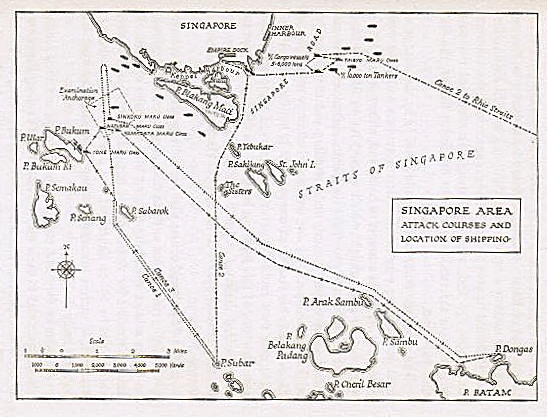
Singapore in 1943
At the time of the raid Singapore was a very different port to its peacetime operations. Private commercial sea-trade had largely ceased with the city subordinated to the Japanese war effort. As a major arterial hub large quantities of war supplies were brought in for on-shipment, primarily to Burma. Major exports included bauxite from nearby Bintan Island, and Batu Pahat in Malaya that was shipped to Japan primarily to be turned into aluminum for aircraft production. Tin, rubber, lead, looted consumer durables and scrap also constituted significant exports to Japan at this time.
The biggest export however was oil and this was undertaken from an island off Singapore (Pulau Bukum). The Imperial Japanese Army controlled refineries in Sumatra at Palembang and oil ports at Medan (Belawan) and Pangkalan Susu supplied oil to Pulau Bukum’s storage tanks from where it was loaded onto tankers sailing to Japan. Draft restriction and a shortage of storage meant there was a constant shuttle of mostly smaller tankers in particular between Palembang and Pulau Bukum. Many of the ships used were former Allied vessels captured by Japan in its drive south in 1942 and repaired and restored to service.
As well as Pulau Bukum, the port of Singapore at the time consisted of Keppel Harbour and the Inner Harbour, the former of which was the main working docks. Ships anchored in the examination anchorage between the islands of Pulau Blakang Mati (today’s Sentosa Island) and Pulau Bukum or further west off Pasir Panjang or more commonly further east in Singapore roadstead.
How Many Ships Successfully Attacked?
At the time of Jaywick through successful code-breaking, the Allies had extensive access to Japanese radio traffic particularly in the Singapore/Malaya area where reception allowed a higher degree of interception. Further as they advanced the Allies captured a number of critical documents. Most of these cast doubt as to the saboteurs claim of seven ships sunk or damaged:
“On 27 September at Singapore Harbour six 2000-5000 class ships including 3 tankers were damaged by saboteurs.” (Captured Document[6])
“Holes about 2 metres wide running from the engine room to the stern about the waterline were blown in the sides of 6 transports in Singapore Harbour early in the morning of 27 September.
Cause: The chief criminals were two Malayans. For carrying out the explosions of the transports they were guaranteed a means of livelihood after the English Army reoccupied Malay (sic). The Malayans were taught to tie the explosives to the gangway ladders or to place them in the waterways of the deck scuppers” (Captured Document)
“4 ships in the harbour at Singapore were blown up by Malayans led by Caucasians.” (Captured Document)
“In Singapore on the morning of 27 September six ships of 2000-5000 tons (three tankers among them) were sunk by bombs due to a clever plan by Malayans working under the supervision of Caucasians working behind the scenes” (Captured Document 12985)
“Singapore shipping espionage has been carried out by natives under European instruction…an enemy espionage affair developed early in the morning of September 27, 1943 at Singapore. It was commanded by Europeans hiding in the neighbourhood of Palai in Johore. It was carried out by Malayan criminals through a Malayan village chief and the party was composed of 10 or more persons, all of them Malayans. As a result of the raid, seven ships were sunk by bombs due to a clever plan.” (Quoted in “Return of the Tiger” by Brian Connell, p83 based on a captured document not sighted by author)
“At dawn on 27th KIZAN MARU and 2000 ton HAKUSAN MARU exploded and sank at Singapore” (radio message 291258 partial intercept only)
“Early on the morning of the 27th five “A” class ships blew up in Singapore Harbour, two ships sank” (part message JN25J/9135 from Staff Officer No.1 Southern Expeditionary Force[7])
The only source that lists seven ships sunk is secondary and the original source has not been sighted. If one excludes the two radio messages that deal with aspects only, of the five captured documents, three claim 6 ships sunk, one 4 ships sunk and the secondary source 7 ships. It seems probable, though not definite therefore that six ships were sunk, which incidentally accords with Davidson/Falls recollection of the number of explosions. Based on the detailed vessel descriptions he provided, Davidson appears as the keenest observer of the party, but as noted his canoe was furthest away at the time of the explosions, and so this in itself is far from conclusive. What is however apparent is that the Japanese had no idea as to the cause of the attack and the suspicion that local guerillas were responsible eventually culminated in a wholesale purge of suspected persons in Singapore - the infamous Double Tenth Massacre (10 October 1943).
Identities of Ships Attacked
At the time of the attack 45 vessels were known to be in port at Singapore as follows, and another (Tatsuwa Maru) shown as in port, but suspect [8]:
| Name | Built | GT | Type | Comments |
| Arare Maru | 27 | 2770 | (tanker) | Arrived 21/9/44 from Pangkalan Susu |
| Ariake Maru | 43 | 5449 | (tanker) | In port from 26/9/43 to ? - arrived Palembang 4/10/43 (probably arrived from Medan 18/9/43) |
| Beiju Maru | 41 | 539 | (tanker) | Under repair at Singapore 15/9/43, supposedly departing 20/9/43, departed Palembang 24/9/43 at 1400, exact arrival date unknown, arrived at Palembang from Singapore 4/10/43. |
| Bogota (German) | 37 | 1230 | At Singapore 20/9/43 and 21/9/43 and 16/10/43.Likely there throughout period though possibly at Seletar. Used as Aux Sub depot ship. | |
| Enoshima Maru | 17 | 1158 | (tanker) | Arrived 27/9/43 from Belawan. Departed 29/9/43 for Balikpapan. |
| Gyoryu Maru | 94 | 984 | (tanker) | ex Sumatra. Under repair at Palembang 22/9/43 and 23/9/43. Loading at Singapore 28/9/43. Likely arrived 26 or 27/9/43 |
| Gyosho Maru | 31 | 2561 | ex Reael listed 8/10/43 and 27/10/43 under repair. Definitely shown under repair 6/9/43, 21/9/43, 28/11/43. Had been salved at Muntok 1/2/43 and possibly still refitting for return to service | |
| Hakusan Maru | 20 | 2197 | Arrived 22/9/43 from Pangkalan Susu (apparently carrying oil) | |
| Halaban Maru | 97 | 682 | (tanker) | Departed Singapore 21/9/43 for Palembang. Back in port 26/9/43. Arrived in Singapore from Palembang 6/10/43. |
| Hiburi Maru | 19 | 4366 | In port from 21/9/43 to 6/10/43 then to Takao | |
| Himalaya Maru | 18 | 5228 | Arrived 12/9/43 and departed 6/10/43 to Jakarta | |
| Hozan Maru No.1 | 43 | 868 | (tanker) | Departed Medan 23/9/43 arrived Singapore about 26/9/43. In port 28/9/43. |
| Iida Maru | 11 | 1105 | In port from 26/9/43 to 6/10/43 then to Palembang | |
| Imaharu Maru | 00 | 1980 | Ex De Klerk. In port from 24/9/43 to 1/10/43 | |
| Kaisoku Maru | 31 | 1126 | (tanker) | Departed for Medan 1700 21/9/43 departed Medan 23/9/43 but back in Singapore as at 26/9/43. Taking on provisions 28/9/43, at Singapore 9/10/43, departing 17/10/43. Note Tokusetsu Kansen website TROM says arrived Pangkalan Susu 1/10/43 via Medan. |
| Kashiwa Maru | 18 | 974 | In port 28/9/43. At St Jacques awaiting a convoy 5/10/43. | |
| Kizan Maru | 18 | 5071 | At Singapore 15/9/43, 21/9/43, arrival date unknown (arrival from St Jacques) | |
| Kokuei Maru | 43 | 5154 | (tanker) | Departed Medan 23/9/43 arrived Singapore about 26/9/43. |
| Koshin Maru | 39 | 430 | (tanker) | Departing Singapore 20/9/43. In or near Singapore 9/10/43. Departed Palembang 12/10/43 for Singapore. |
| Kotoku Maru | 43 | 1943 | (tanker) | Known to be on oil run to Medan and Palembang. Departed Medan 19/9/43. In Singapore 21/9/43, preparing to sail 27/9/43 (ie empty). Next movement arrived Medan 7/10/43 |
| Koyu Maru | 21 | 5324 | In port from 17/9/43 to 28/9/43, then to Prai | |
| Miike Maru | 41 | 11739 | Supposedly arrived St Jacques in HI-09 21/9/43 but in fact likely arrived Singapore this date. Apparently in port until departed in HI-12 10/10/43 | |
| Miri Maru | 43 | 10566 | (tanker) | In port 21/9/43. Arrived Departed St Jacques 28/9/43 in HI-10. (Note shown in some sources as departing Singapore this date) |
| Nanei Maru | 42 | 5019 | (tanker) | Under repair 21/9/43, in port 26/9/43, arrived Takao 10/10/43 |
| Nichinan Maru | 42 | 5175 | (tanker) | Arrived Palembang 22/9/43. Departed For Singapore 24/9/43. Arrived 26/9/43. Loading as at 28/9/43. Departed Singapore 3/10/43 in convoy SA-13 with Kozui Maru |
| Nichiren Maru | 20 | 5460 | Arrived Singapore 20/9/43 from Rangoon. | |
| Nichirin Maru | 42 | 5162 | (tanker) | Loading Palembang 13/9/43. In port 28/9/43. Arrived 7/10/43 probably from Palembang. |
| Nippo Maru No.11 | 36 | 195 | (tanker) | At Singapore 20/9/43. Arrived Woosung 18/10/43 |
| Nisshin Maru | 36 | 16801 | (tanker) | Undergoing repairs probably at Seletar 2/6/43 to 30/11/43 |
| Olympia Maru | 27 | 5617 | (Aux repair) | In port 1/9/43 to 3/10/43. Moored fairly close to city in roadstead. |
| Otowasan Maru | 36 | 9204 | (tanker) | Likely arrived in convoy HI-09 21/9/43 Departed 27/9/43 for St Jacques |
| Palembang Maru | 42 | 5236 | (tanker) | Damaged by mine 26/5/43 and under long-term repair by Mitsubishi Jukogyo Shonan Zosen at Keppel Harbour. Likely close to Singapore city and Olympia Maru |
| Seishu Maru | 40 | 1491 | (crane ship) | At Singapore 20/9/43, 21/9/43, 16/10/43 always showing as loading |
| Shohei Maru | 30 | 120 | In port 20/9/43, 21/9/43, 16/10/43. Probably used as a lighter or for small coastal voyages. | |
| Shosei Maru | 22 | 5698 | (tanker) | Arrived 23/9/44 from Palembang. |
| Sugi Maru No.5 | 19 | 1983 | Ex Gran. In port from 21/9/43 to 3/10/43, then to Palembang | |
| Sydney Maru | 29 | 5425 | In port from at least 21/9/43 to 28/9/43. Scheduled to arrive Takao 10/10/43 | |
| Taiei Maru | 18 | 2217 | Arrived 2/9/43 departed 27/9/43 and arrived Jakarta 3/10/43. | |
| Taikai Maru | 17 | 3812 | Under repair at anchor as at 15/9/43. Listed 8/10/43 most likely still under repair. Definitely listed as such 1/11/43 and 12/11/43. Listed as arrived 3/4/43 and departed Singapore 14/12/43 and under repair for all most of this time from unknown cause. | |
| Taisho Maru | 89 | 797 | In Singapore 6/9/43, 8/9/43, 15/9/43, arrived from Medan on 17/10/43. (May have been mistaken by code-breakers for 38, 4815 ship that was in Japan at this time, arriving from Palau on 17/9/43) | |
| Taiyu Maru | 38 | 1874 | In port 20/9/43-28/9/43 then to Belawan. | |
| Takatori Maru No.2 | 31 | 531 | (tanker) | Departed for Medan 8/9/43. In port 28/9/43 and 8/10/43. |
| Tatekawa Maru | 35 | 10090 | (tanker) | Supposedly arrived St Jacques in HI-09 but in fact likely arrived Singapore this date. Departed St Jacques 28/9/43 in HI-10. |
| Tateyama Maru No.2 | 39 | 394 | In port 21/9/43 under repair, arrived Batavia 8/10/43 from Palembang. Under repair Singapore 26/10/43. | |
| Tatsuwa Maru | 37 | 6332 | Arrived Singapore 25/9/43 from Kirun and departed 3/10/43. NB dubious more likely Hong Kong or Manila. Probably not in Singapore at this time. | |
| Yagumo Maru | 19 | 3198 | In port from 24/9/43 to 5/10/43 | |
| Zenyo Maru | 37 | 6441 | (wreck) | CTL 2/8/42 from sub attack and later towed to Singapore. The wreck was probably still in Singapore at this time, possibly in the course of scrapping. |
In addition a further 6 vessels were believed to be likely in port as follows:
| Name | Built | GT | Type | Comments |
| Kenzan Maru | 19 | 4704 | Arrived Singapore 13/9/43. In port 21/9/43. At Batavia awaiting escort 4/10/43. | |
| Nasusan Maru | 31 | 4399 | (tanker) | Arrived Singapore 13/9/43 from Palembang and de-requisitioned by Navy 17/9. |
| Nichinan Maru (Note 1) | 43 | 1945 | (tanker) | Under repair at Singapore 21/9/43. Departed Palembang 25/9/43. Likely arrived Singapore 27/9/43 after attack. Arrived Palembang 4/10/43. |
| Nikkaku Maru | 43 | 1937 | (tanker) | Arrived Singapore 20/9/43, next report departing Palembang 28/10/43 |
| Samui (Thai) | 36 | 1854 | (tanker) | At Singapore 20/9/43, arrived Singapore 25/10/43 from Bangkok. May have been in port. |
| Valaya (Thai) | 18 | 1311 | In port 15/9/43, 21/9/43, 13/10/43 |
Postwar Japanese records[9] shed light on three of the ships attacked and sunk as follows:
(Shown as name, date of build, gross tonnage, owner, former name and flag if captured, vessel type)
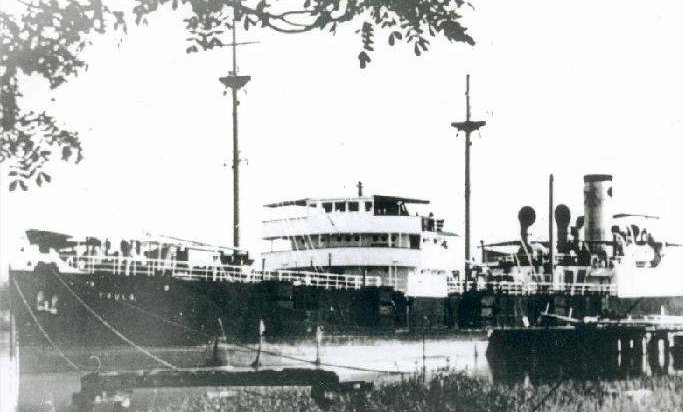
ARARE MARU 27 2770 Daito Kisen ex PAULA (Du) (Tanker)
27/9/43 mined and sunk in Shonan (Singapore). One crewman was killed.
Configuration: MMF[10], trunk deck, much lower funnel than photo than shown in ONI-208J, counter stern
Notes: Salvaged and resumed Sumatra-Singapore oil feeder service very shortly after and in November 1945 returned to Dutch owners. The ship was renamed NANJO MARU later in the war although whether this was as a result of salvage or simply transfer is unclear.
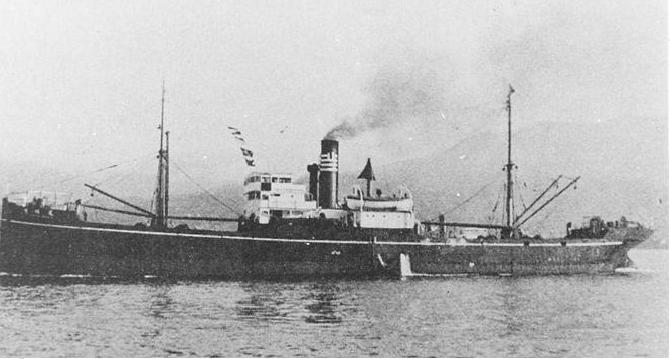
HAKUSAN MARU 20 2197 Tomoe Gumi Kisen
27/9/43 anchored Pulau Bukum (about 10km SW of Singapore Port) when sunk in explosion caused by magnetic mines.
Configuration: MFM, 3 island, counter stern
,
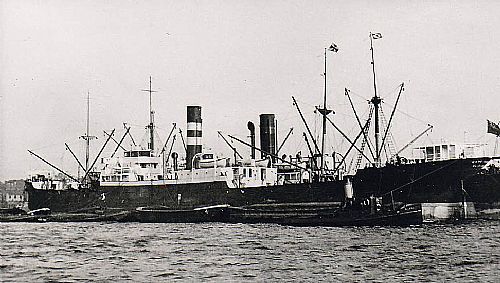
KIZAN MARU 18 5077 Miyachi Kisen
27/9/43 anchored off Pulau Bukum with a bearing SW of Pasir Panjang in Shonan (Singapore) Port when 7 magnetic mines placed on hull exploded and sank the ship. One crewman was killed.
Configuration: MFM (small derricks amidships), 3 island, counter stern.
Note: The reference to 7 is interesting as each canoe only carried 9 mines (officially 8) with 3 for each ship. Salvage was attempted but these attempts were finally abandoned in July 1944 and the ship was broken up.
Given that the appearance of all of these ships, and the location of two of them is known it is apparent that HAKUSAN MARU is the TONE MARU type sunk at Bukum wharf (Target 5) and the KIZAN MARU is the YAMAGATA MARU type (Target 7) anchored off Pulau Bukum both sunk by Page/Jones. (Although it should be noted that the KIZAN MARU had a fairly prominent break amidships with a hatch for No.3 hold that neither the TONE MARU or YAMAGATA MARU types do). It is probable that the ARARE MARU was Target No.4 sunk by Davidson/Falls and unidentified in ONI-208J. In fact ARARE MARU under her former Dutch name of PAULA does appear on page 281 of ONI-208J but the drawing and photo (of URDANETA) an alleged sister ship is wrong. PAULA, although dimensionally the same as URDANETA, had two masts not one, a larger bridge, a shorter stumpier funnel and a raked bow, as well as a trunk deck (the two decks that Davidson identifies?).
To tentatively identify the remaining ships it has been necessary to rely on intercepted radio traffic and/or tabulated records of movement. The records of Dai San Sempaku Yuso Shireibu, the third shipping area group headquartered in Singapore is missing, and these were probably destroyed in the period between the general surrender on 15 August 1945 and local surrender and re-occupation on 12 September 1945. No “smoking gun” document or decrypted radio signal has been found but it is possible to determine based on radio traffic reports of vessels under repair post 27 September and the movement records to tentatively identify three other ships that were only damaged:
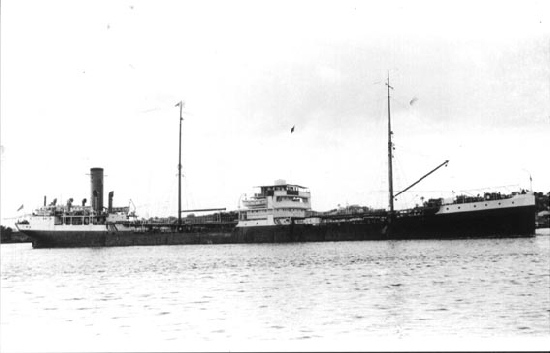
SHOSEI MARU 22 5698 ex SOLEN (Br) (tanker)
While not shown in any sources as sunk the ship made no further movements from arrival Singapore 23 September to departure 17 December 1943. This strongly implies the ship was repairing damage.
Radio signals show the ship as under repair in at least 5 such signals from 6 October 1943 to 12 November 1943. Further the records of movement show the ship arrived from Palembang 23 September but did not depart Singapore for Palembang until 17 December (arrived there 18 December 1943).
Configuration: MMF, counter stern, 3 island with engines aft.
This seems the likeliest candidate for the misidentified SHINKOKU MARU (Target 1) though see additional comments below.
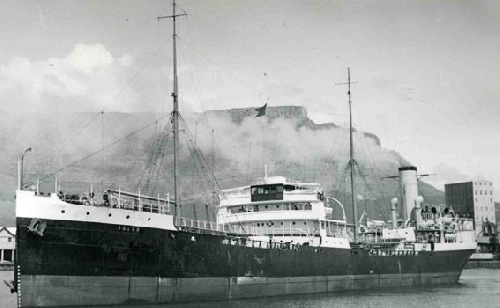
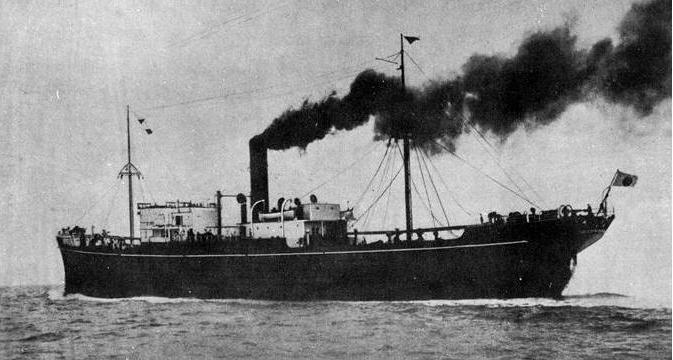
NICHIREN MARU 20 5460
Intercepted radio signals show the ship under repair in at least 5 signals between 6 October 1943 and 1 November 1943. The ship is known to have arrived Singapore 20 September 1943 and then no reported movements until she departed Singapore in convoy No.635 (part 2) on 11 November 1943.[12]
Configuration: MFM (small derricks amidships), 3 island, counter stern.

NASUSAN MARU 31 4399 (converted tanker)
The ship is believed to have spent the period from 12 July 1943 to 30 January 1944 as a feeder ship on the oil run between Shonan and Palembang. Because the ship was derequisitioned by the IJN (Navy) on 17 September little information on movements are available although a radio signal reports the ship departing Palembang on 16 November. The ship is presumed damaged only because of the absence of radio traffic (noting though that this is certainly not conclusive evidence) and her unusual appearance permitting the positive identification of her by the saboteurs.
Configuration: MKMF with 3 sets of kingposts and engines aft, counter stern. 3 island.
It is very likely that NICHIREN MARU was Target 2 (Davidson/Falls first target) and that NASUSAN MARU was Target 6. This leaves Targets 1 and 3 unaccounted for. It should be noted that SHOSEI MARU bears only a vague resemblance to the descriptions provided for both targets. The ship had a counter stern and straight bow. It is considered that on the basis of the ship being identified as a tanker and the masts being reported in the correct position that the ship fits Target 1 better.
The identity of Target 3 remains unconfirmed. The TAISHO MARU (38, 4815), that she was provisionally identified as, was in Japan at the time. The design of the ship with 3 kingposts was unusual and the fact that NASUSAN MARU fits this description almost tempts one to speculate if the ship moved anchorages and was attacked twice. The timings suggest otherwise- although it is slightly unclear in which order Page/Jones attacked their ships. The summary of the report indicates HAKUSAN MARU (Target 5), KIZAN MARU (Target 7) and NASUSAN MARU (Target 6) in that order. The detailed information on each ship attacked and signed separate statements by Lieut. Page and AB Jones indicate the order was Targets 5, 6, and 7. Assuming the latter is correct, the earliest the NASUSAN MARU could have been attacked by Page/Jones is about 11.30pm while 12.30am was the latest the same ship could have been attacked by Davidson/Falls.
It is also possible that Davidson was somewhat wrong in his identification. The detailed description he provided suggests a modern new ship. The Japanese standard design 1D fits closely though it normally only had 1 set of kingposts (abaft the bridge) not 3 sets and had a tall funnel. There were however construction variations and it is possible that the ship sighted was one of these variations. KOTOKU MARU (43, 1943) and NICHINAN MARU (43, 1945) were both 1D converted tankers known to be in the Singapore area at the time, although the former was definitely known to have 1 set of Kingposts only, and the latter may have arrived only after the raid. Both clearly escaped damage as they are shown to still be in service shortly after. A third converted tanker NIKKAKU MARU (43, 1937) was apparently civilian operated and little traffic or information is available. The ship was known to be at Singapore 20th September and next appears in traffic 28th October. But even if it was one of these vessels the likelihood is the attack didn’t cause damage. Possibly the magnets failed to grip and the charges fell off, or the detonator/s failed.
A final possibility is that NASUSAN MARU was Target 3 and the unknown ship Target 6. The same comments as above apply.
Summary of Results
The actual outcome based on the partly unconfirmed identifications can be summarised thus:
| Ship | Attacker | Target ID | Gross tonnage | Configuration | Outcome |
| 1 | Lyon/Huston | Shosei Maru ? | 5698 | Engines aft tanker | Damaged |
| 2 | Davidson/Falls | Nichiren Maru ? | 5460 | 3 island cargo | Damaged |
| 3 | Davidson/Falls | Attack failed ? | 0 | Engines aft cargo | NA |
| 4 | Davidson/Falls | Arare Maru | 2770 | Engines aft tanker | Sunk/salved |
| 5 | Page/Jones | Hakusan Maru | 2197 | 3 island cargo | Sunk |
| 6 | Page/Jones | Nasusan Maru ? | 4399 | Engines aft tanker | Damaged |
| 7 | Page/Jones | Kizan Maru | 5071 | 3 island cargo | Sunk |
| Total | 25595 |
Of the 6 ships believed attacked, 5 of them were Army operated (and thus accords with JN25J/9135 radio message). The sixth, NASUSAN MARU had been derequisitioned by the Navy on 17th September and was believed to be in civilian use.
Of note is the fact that 3 of the ships sunk were tankers. A fourth, the HAKUSAN MARU was probably also being used as a tanker (likely through neoprene sealing of holds) as the ship’s most recent voyage had been from Pangkalan Susu to Singapore. The fact that the ship was at the Pulau Bukum wharf when sunk also suggests this.
Materially the raid was less damaging than originally estimated. Nevertheless any shipping loss was serious to the Japanese whose construction program struggled to keep pace with sinkings and finally failed to do so in 1944. The loss of tankers even for a brief time would have been keenly felt. More important was the effects on morale, with the sinkings providing a boost to the populace raising hopes and reinforcing beliefs that the Allies would eventually triumph.
 (Imperial Japanese Navy).
(Imperial Japanese Navy).